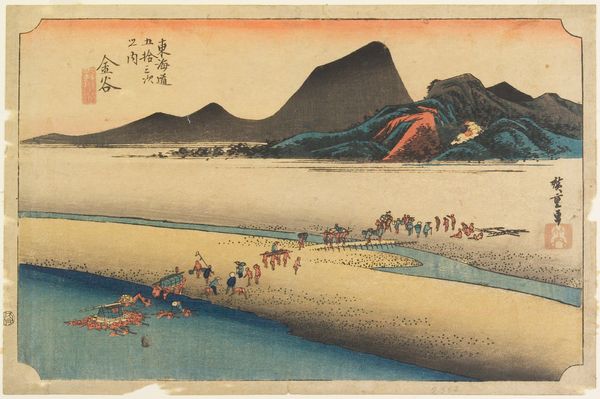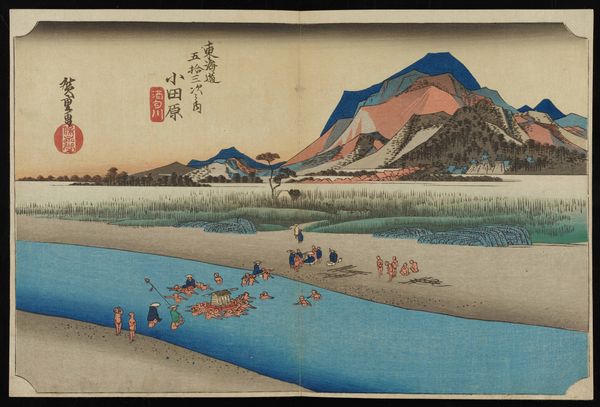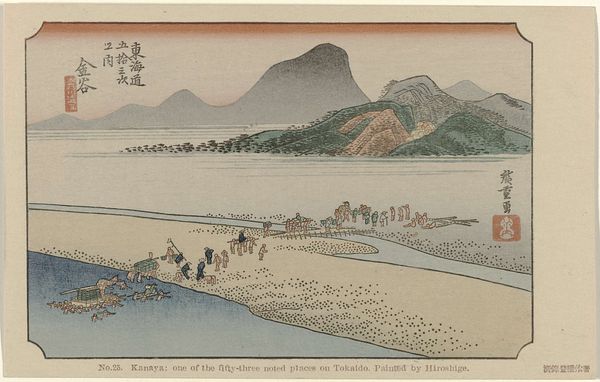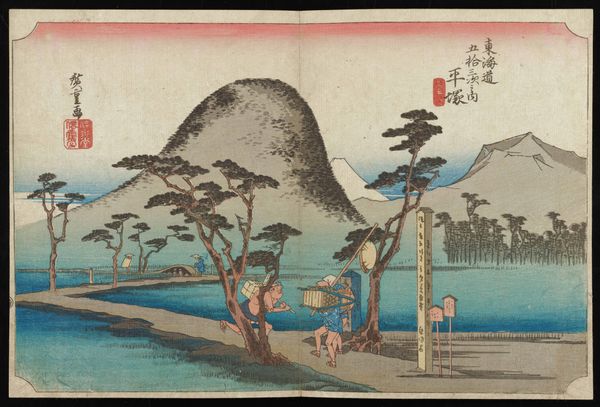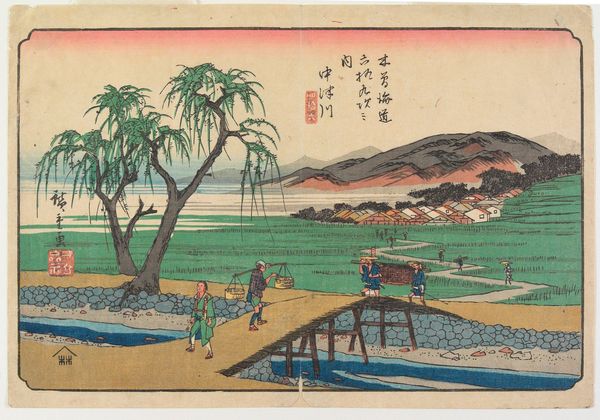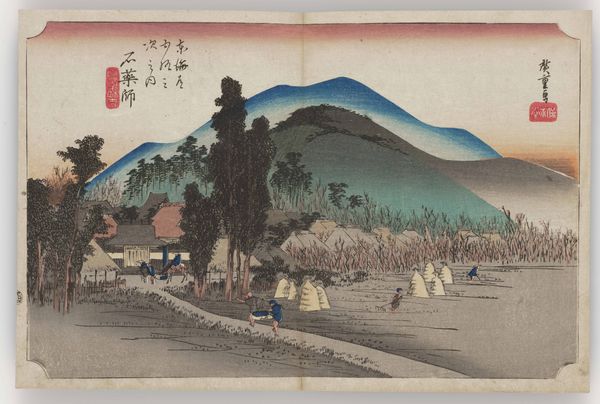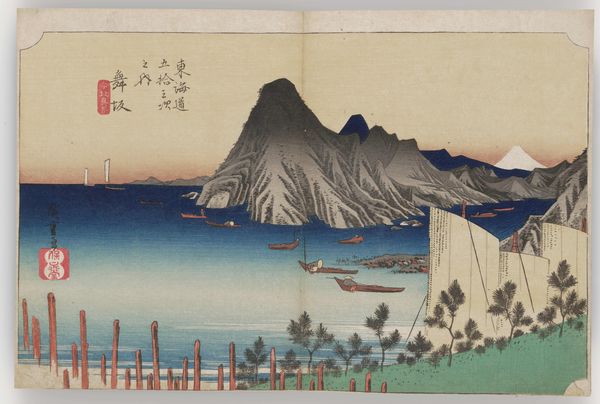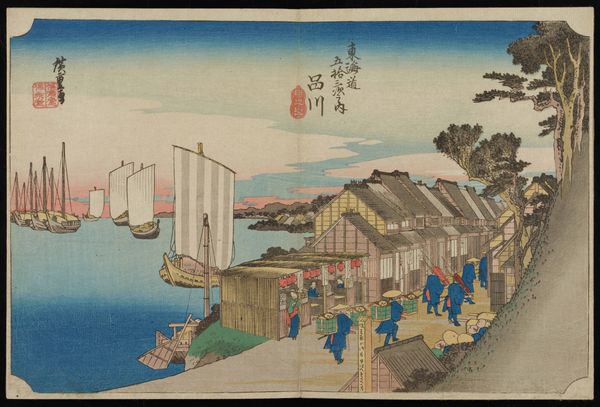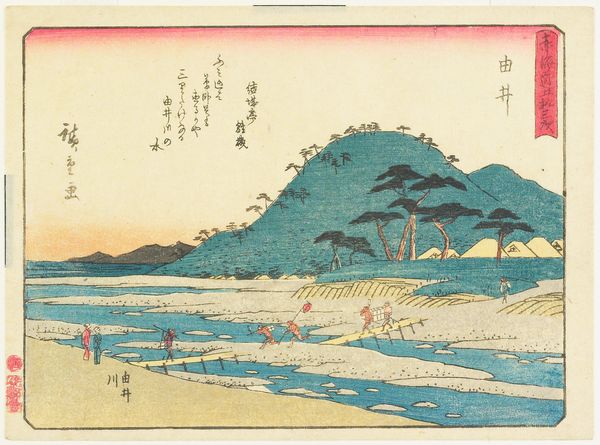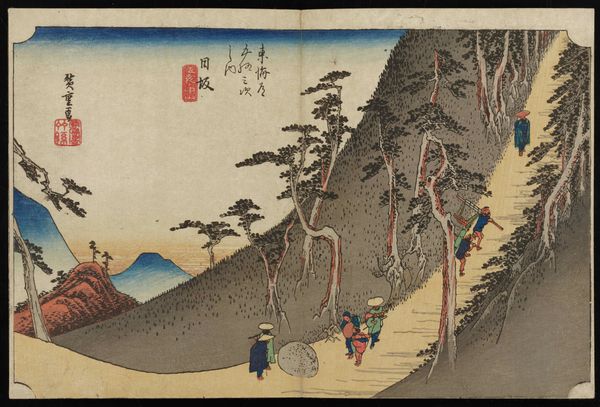
print, ink, woodblock-print
# print
#
asian-art
#
landscape
#
ukiyo-e
#
figuration
#
ink
#
woodblock-print
Dimensions: 9 1/2 × 14 1/4 in. (24.13 × 36.2 cm) (sheet, horizontal ōban)
Copyright: Public Domain
Curator: It strikes me as quite ethereal, almost dreamlike with those soft pastel colors. There's a strange sense of depth—or maybe a lack of it? It feels very stylized. Editor: This is Utagawa Hiroshige's woodblock print, "Kanaya--Distant Bank of Ōi River," made around 1832-1833, from his famous series "Fifty-three Stations of the Tōkaidō." Hiroshige’s prints were produced using multiple woodblocks, each responsible for a different color, requiring meticulous labor by artisans besides Hiroshige himself. Curator: The labor speaks to the democratized process of making art. It forces one to rethink assumptions on originality or singularity. Notice how the lines and shapes emphasize movement and direction through diagonals, dividing the composition. This imbues a structured, almost codified order. How the artist segments foreground and background contributes to depth. It’s quite masterful for a common form like prints. Editor: What fascinates me is the depiction of labor, particularly that arduous river crossing. Look at how the porters strain to carry passengers on their backs. This highlights a socio-economic aspect rarely discussed in such idyllic landscapes. These weren't pleasure trips for many, but rather fundamental journeys required by Edo-period policies. We also cannot neglect the wood and pigments utilized by these master printers. What local trees served for blocks, or sources provided pigment for hue? Curator: Yes, the visual storytelling points to the tensions between nature, infrastructure and the individuals who worked there. I’m drawn to how this depiction of physical strain is flattened. Hiroshige flattens pictorial space. The near-absence of strong shadows creates an atmosphere where human activities exist seamlessly within—but are also distinct against—nature. Editor: Considering ukiyo-e as "pictures of the floating world," how does the act of printing impact our perceptions of nature itself? Did producing images for mass markets shift the aesthetic values linked to specific locations like the Ōi River? I wonder what role his publisher played when considering composition? Curator: A fascinating prospect, certainly food for more thought on consumption shaping artistic license and intent.
